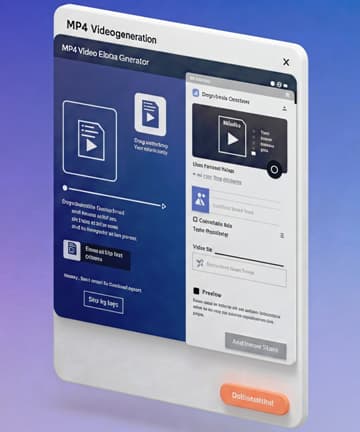Font Pairing Tool
Perfect typography combinations for your blog posts
Font Settings
Live Preview
Your Blog Post Title Goes Here
This is a subheading example
This is how your blog post content will look with the selected font combination. The body text should be highly readable and complement your heading choice perfectly. Good typography creates a professional appearance and improves the reading experience for your visitors.
Lorem ipsum dolor sit amet, consectetur adipiscing elit. Sed do eiusmod tempor incididunt ut labore et dolore magna aliqua. Ut enim ad minim veniam, quis nostrud exercitation ullamco laboris.
CSS Code for Your Blog
Why Font Pairing Makes or Breaks Your Blog's Success
Perfect Typography Font Pairing Tool isn't just about making words look pretty. It's the silent salesperson working 24/7 on your blog, either drawing readers in or pushing them away before they've read a single sentence.
Consider the previous time you visited a site with Comic Sans titles combined with small, narrow body text. You most likely clicked the back button quicker than you could utter the word "unprofessional," correct? That's what typography can do for you, all wrong.
The Science Behind Font Psychology
Fonts are emotionally charged. Serif fonts such as Times New Roman whisper "traditional" and "trustworthy." Helvetica and other sans-serif fonts scream "modern" and "clean." Script fonts whisper "modern" but can yell "hard to read" if too prominent.
Your font selections send subtle messages about your company before visitors even get to absorb your actual content. A financial planner with playful fonts may not look so trustworthy. A creative agency with stodgy, corporate fonts may look dull.
Common Font Pairing Faux Pas That Kill Readability
Typography errors are the same for most bloggers. They select fonts based on taste rather than reader experience. They select fonts that are visually indistinguishable, creating no visual hierarchy. Or they overdo it with decorative fonts, making their content more difficult to read than a doctor's prescription.
The worst error? Employing more than two font families. Your blog is not a showcase of fonts. It's a communications tool.
The Golden Rules of Professional Font Pairing
Successful font pairing is based on easy rules. Create contrast between headings and body text. If your headings are in a serif font, use a clean sans-serif for body text. This gives you the class of old typography with the readability of new design.
Use fonts that fall within the same historical or design aesthetic era. Using a classic serif and a futuristic sans-serif puts visual tension that takes attention away from your message.
Think about your audience and topic. Tech blogs fit best with current, geometric fonts. Lifestyle blogs excel with more natural, approachable typefaces. Legal or financial web sites do well with conservative, dependable fonts.
Technical Considerations for Blog Typography
Web fonts impact your site's speed of loading. Google Fonts provides an optimal balance between assortment and performance. Restrict yourself to two font families with only the weights that you truly use.
Consider cell phone readers. More than 60% of blog traffic is generated by mobile phones. Fonts that are wonderful on desktop monitors may become illegible on cell phones. Test your selections across devices.
Line spacing is more important than font selection at times. Compact paragraphs with close line spacing tire readers' eyes out. Use line heights of 1.4 to 1.6 for the best readability.
Developing Your Font Strategy
Begin with your content's personality. Is your blog formal and serious? Experiment with Open Sans body text paired with Merriweather headings. Need something more friendly? Lora and Inter make an inviting yet believable pair.
Consider your industry standards. While creativity matters, straying too far from reader expectations can backfire. Financial blogs rarely use handwritten fonts because they undermine credibility.
Test different combinations with your actual content. Lorem ipsum doesn't reveal how fonts perform with your writing style and article length. Use your own blog posts to evaluate legibility and aesthetic appeal.
Beyond Basic Pairing: Advanced Typography Tips
Font weight establishes hierarchy without altering typefaces. Apply bold headings, medium subheadings, and normal body text to navigate readers through your content hierarchy.
Color has more influence on font readability than size at times. Bright white and pure black text may strain eyes. Experiment with dark gray (#333333) for body text. It is less strenuous on the eyes while being excellent contrast.
White space is the friend of your typography. Plentiful margins, paragraph space, and line height make even mediocre font selection professional.
Getting Typography to Work for SEO
Search engines are interested in user experience signals. Bounce rates due to poor readability harm your rankings. Good typography keeps people reading longer, sending positive signals to Google.
Accurate heading structure (H1, H2, H3) with consistent font families makes it easier for search engines to recognize your content organization. This enhances your opportunity to secure featured snippets and improved rankings.
Mobile-friendly typography isn't merely friendly to users—it's vital for Google's mobile-first indexing. Fonts that are optimized for smartphones improve your SEO results.
Tools and Resources for Better Typography
Google Fonts has the greatest variety of web-safe fonts. Their suggested pairings eliminate the guesswork about combinations that will work well together.
Typography testing software lets you preview fonts against your real content. Avoid generic example text that doesn't show your writing style.
Font loading optimization software prevents your typography decisions from slowing your site down. Slower sites harm user experience and search rankings.
Your typography choices add up. Each blog post, each headline, each paragraph contributes to your brand's visual identity. Select fonts that will help your content strategy for a decade, not just this season's design fads.
Smart typography isn't trend chasing. It's making an intuitive read that allows your ideas to cut through simply. When readers forget they're reading and get invested in your message instead, you've hit your font pairing strategy.





